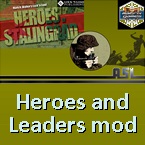asl3d
Posts: 6531
Joined: 2/6/2017
Status: offline

|
British GMC CCKW 353 2.5 ton tr
The GMC CCKW, also known as "Jimmy", or the G-508 by its Ordnance Supply Catalog nr, was a highly successful series of off-road capable, 21⁄2-ton, 6×6 trucks, built in large numbers to a standardized design (from 1941 to 1945) for the U.S. Army, that saw heavy service, predominantly as cargo trucks, in both World War II. The original "Deuce and a Half", it formed the backbone of the famed Red Ball Express that kept Allied armies supplied as they pushed eastward after the Normandy invasion.
The CCKW came in many variants, including open or closed cab, long wheelbase (LWB) CCKW-353 and short (SWB) CCKW-352, and over a score of specialized models, but the bulk were standard, general purpose, cargo models. A large minority were built with a front mounted winch, and one in four of the cabs had a machine-gun mounting ring above the co-driver's position.
Of the almost 2.4 million trucks that the U.S. Army bought between 1939 and December 1945, across all payload weight classes, some 812,000, or just over one third, were 2+1⁄2-ton trucks. GMC's total production of the CCKW and its variants, including the 21⁄2-ton, 6x6, amphibian DUKW, and the 6×4, 5-ton (on-road) CCW-353, amounted to some 572,500 units – almost a quarter of the total WW II U.S. truck production, and 70 percent of the total 2+1⁄2-ton trucks. GMC's total of ~550,000 purely 6×6 models, including the DUKW, formed the overwhelming majority of the ~675,000 six by six 2+1⁄2-ton trucks, and came in less than 100,000 shy of the almost 650,000 World War II jeeps. Additionally, GM built over 150,000 units of the CCKW's smaller brother, the 1+1⁄2-ton, 4×4 Chevrolet G506, at the same factory.

 Attachment (1) Attachment (1)
_____________________________
Semper fidelis
|
 Printable Version
Printable Version





































 New Messages
New Messages No New Messages
No New Messages Hot Topic w/ New Messages
Hot Topic w/ New Messages Hot Topic w/o New Messages
Hot Topic w/o New Messages Locked w/ New Messages
Locked w/ New Messages Locked w/o New Messages
Locked w/o New Messages Post New Thread
Post New Thread